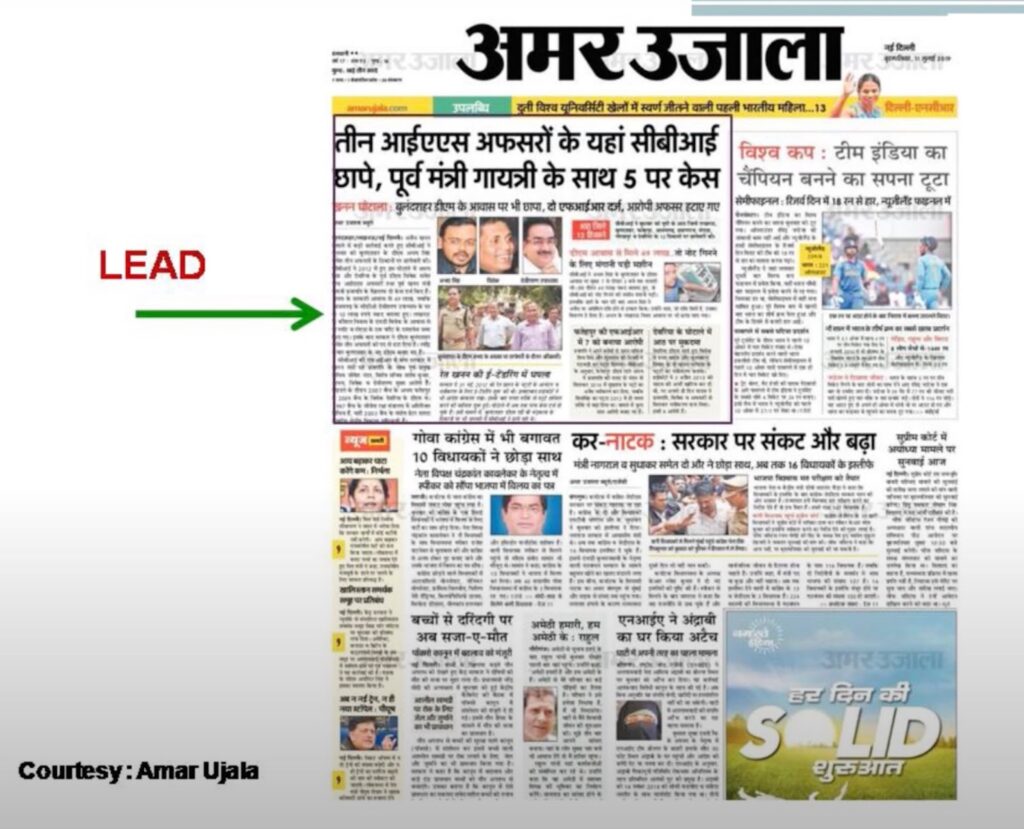The Core Essence of a Lead in Journalism
In the vast universe of journalism, there’s a singular element that stands out as the most critical yet often underappreciated: the lead. At its core, the lead is the beating heart of every news story. It’s the magnet that draws readers in, setting the stage for the unfolding narrative. But beyond its immediate appeal, the lead carries with it layers of significance. In this exploration, we’ll journey through its origins, anatomy, evolution, and its undeniable impact on the journalistic world.
The Origin of the Lead
To appreciate the essence of the lead, we must travel back in time to the inception of journalism. Before the dawn of the print era, news was largely shared through word of mouth. However, as newspapers began to gain traction, the necessity to instantly captivate readers became paramount. Thus was born the lead—a succinct yet powerful introduction that encapsulated the essence of the story while promising a deeper dive into the details.
The Anatomy of a Lead
Much like the DNA that forms the building blocks of life, the lead, too, has its distinct components:
- Purpose: At its core, the lead serves as a beacon, illuminating the path the story intends to take. It offers readers a glimpse into the story’s heart, making promises it intends to fulfill;
- Tone: The lead mirrors the emotional palette of the article. Whether it’s the somber aftermath of a tragedy, the joy of a celebratory event, or the neutrality of a factual report, the lead sets the mood;
- Structure: While brevity is its hallmark, the lead is a masterclass in balancing conciseness with descriptiveness, ensuring it’s devoid of jargon while still being evocative.
Types of Leads:
The world of news is multifaceted, and so is the approach to crafting leads. Here’s a more in-depth look:
- Summary Lead: It’s like offering readers a snapshot. Within a sentence or two, it encapsulates the who, what, when, where, and why of the news;
- Anecdotal Lead: Stories resonate with humans. By beginning with a personal tale or a compelling example, this lead taps into our innate love for narratives;
- Question Lead: Ever been intrigued by a question? This lead does precisely that, stirring curiosity and urging readers to delve deeper for answers.

Crafting the Perfect Lead
While every journalist has their unique style, certain universal principles guide the art of lead writing:
- Know Your Audience: A lead tailored for millennials might differ from one crafted for retirees. Understanding the reader demographic is essential;
- Be Concise: In an age of information overload, readers appreciate brevity. The challenge lies in delivering maximum impact in minimum words;
- Add a Hook: Beyond mere information, the lead must evoke emotion, be it surprise, concern, joy, or intrigue. It’s this emotional pull that truly engages readers.
Lead vs. Nut Graph:
Consider the lead as the appetizer and the nut graph as the main course. While the lead tantalizes your taste buds, the nut graph offers a hearty, fulfilling experience.
Lead vs. Nut Graph
| Lead | Nut Graph | |
|---|---|---|
| Purpose | Introduce the story’s crux. | Provide background and context. |
| Position in Article | Usually the first sentence/lines. | Follows the lead. |
| Length | Concise. | Can be more descriptive. |
The Evolution of Leads in Digital Age
With the advent of the internet, the playfield shifted. Now, leads aren’t just vying for attention on paper; they’re competing in the vast digital arena. Digital journalism, with its emphasis on SEO, mobile readability, and viral potential, has added new dimensions to lead writing, ensuring it remains dynamic and adaptable.
Common Mistakes While Writing a Lead
The path to perfection is riddled with pitfalls. Journalists often grapple with challenges like over-embellishing facts, using clichéd phrases, or burying the central idea, diluting the lead’s potency.
The Art and Science Behind a Lead:
Lead writing is where intuition meets methodology. While analytics, trends, and metrics play their part, it’s the journalist’s innate creativity and gut feeling that breathes life into the lead, making it resonate with readers.
How Leads Impact Reader Engagement:
In a split second, a reader decides whether to invest their time in a story. That decision often hinges on the lead. A compelling lead can be the difference between a widely-read piece and one that’s overlooked, underscoring its paramount importance in journalism.
Conclusion
While the world of journalism is vast and ever-evolving, the lead remains its steadfast cornerstone. It’s a testament to the power of beginnings, the magic of first impressions, and the undying spirit of storytelling. As we consume news daily, it’s worth pausing to appreciate the lead—a small yet formidable force driving narratives worldwide.
